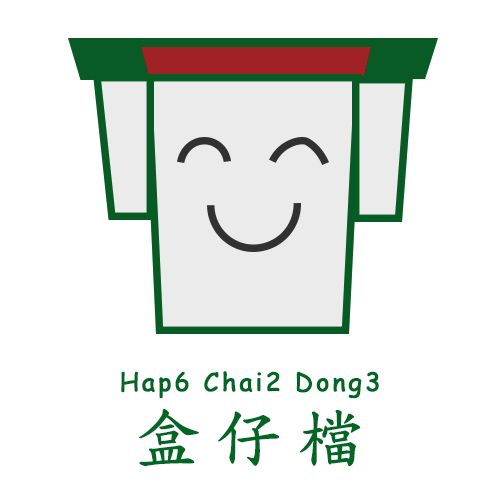About hap chai dong
Welcome to the world of boxes like street stalls whose Cantonese name is hap chai dong (盒仔檔)! From its Chinese name, it is easy to deduce its function—a kind of store in a box shape. In them, their owners offer a variety of commodities and services ranging from traditional Hong Kong snacks to dry products. Usually, in one hap chai dong its owner only sells one sort of goods. Interestingly, hap chai dong providing similar types of commodities will assemble in the same street, forming a thematic fair.
Hap chai dong is a unique scenery which can only be seen in Hong Kong. According to the official website of the Hong Kong Bureau of tourism (www.discoverhongkong.com), there are 8 hap chai dong thematic streets in Hong Kong. For example, this digital gallery covers five thematic streets: Antique Market (Upper Lascar Row) in Sheung Wan, Toy Street (Tai Yuen Street) in Wan Chai, Ladies’ Market (Tung Choi Street) in Mong Kok, Men’s Market (Temple Street) in Yau Ma Tei, Electronic Market (Apliu Street) in Shum Shui Po.
Besides them, there are also some plain streets with hap chai dong alongside. Wandering in these streets, you can feel free to be lost in an array of dazzling merchandises. You can also take a chance to hunt bargains with good quality. You can appreciate their colorful outfits as well. Therefore, these streets attract many tourists, especially foreign visitors.
Hap chai dong also has a nickname “Hong Kong Street Transformer” named by Kit Lau. Kit Lau is a Hong Kong local paper artist. One of his famous artwork is Boxes like street stalls in Hong Kong, a pop-up book introducing hap chai dong all-rounded. The reason why he created this name is that hap chai dong turns into a store in every early morning—first unlock its ‘face’ front doors, subsequently open its ‘ears’ doors on both sides, and then the owner places goods on the ceiling, walls and doors and the ground in front of the hap chai dong. At night, the seller puts all the goods away inside hap chai dong and lock it, so it recovers as a steel box again. As Kit Lau says, “Hap chai dong itself is a bounce-up book. It keeps open and close in Hong Kong streets every day, telling stories of this practical and modest city.” It represents ‘hap chai dong spirit’—diligence and pragmatism of Hong Kong people. You will respect the elderly sellers running their business the whole day. You will be moved by their unreserved smiles and kindness showing to every customer.
Hap chai dong has not been acknowledged as cultural heritage yet, but it can be recognized as a tangible movable cultural heritage. It has a social value of supplying convenience to communities—residents can easily get access to daily commodities with both good quality and fair price. It has a commemorative value of nostalgia, because it carries a collective memory of older generations—it accompanies them to grow up. It has an iconic value since it embodies Hong Kong’s city identity.
However, since supermarkets and convenience stores’ entering the Hong Kong market, their more comfortable shopping environment and more diversified goods beat hap chai dong. On the other hand, increasing rental imposes financial pressure on hap chai dong retailers. What’s worse, few young generations know hap chai dong and thus they seldom visit them. The number of hap chai dong decreases and some thematic fair disappear. Since modern shops offer similar inventories while some hap chai dong sells unique goods, this gentrification trend damages Hong Kong city identity in the context of being more homogeneous. but so far people have not been aware of its significance and urgency of protecting it. Current efforts of preserving hap chai dong are obviously not enough. Therefore, no wonder why hap chai dong has few digital archives.
Digitization can help document the appearance of them and prevent them from physically fading out. In addition, a separate webpage of hap chai dong of the Hong Kong Bureau of Tourism can promote it to more tourists around the world and transmit it to the following generations. More efforts should be paid to protection of hap chai dong. Hong Kong Government can acknowledge it as cultural heritage. Sellers can differentiate goods from supermarkets and convenience stores to co-exist. Citizens can visit it more and consume more goods to support their livelihood.
I hope hap chai dong can survive and be awarded as cultural heritage in the future. It deserves more love and more investigation on its culture.

